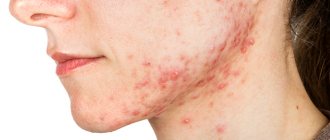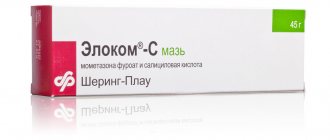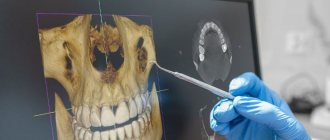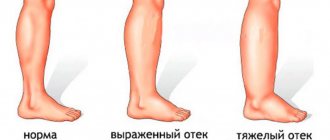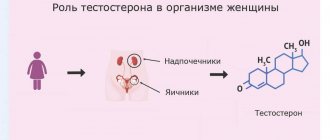Indications
◊ Ministry of Health of Russia
F32 Depressive episode
F41.2 Mixed anxiety and depressive disorder
F42 Obsessive-compulsive disorder
F50.2 Bulimia nervosa
◊ FDA recommendations
- Major depressive disorder (adults and children over 8 years of age)
- OCD (in adults and children from 7 years old)
- Premenstrual dysphoric disorder
- Bulimia
- Panic disorder
- Bipolar depression (in combination with olanzapine)
- Resistant depression (in combination with olanzapine)
◊ Recommendations from UK Medicines and Healthcare Products Regulatory Agency
- Major depressive episode (adults and children over 8 years old only if 4-6 psychotherapeutic sessions have not produced results)
- OCD
- Bulimia (in combination with psychotherapy)
◊ Using Off-label
- Fibromyalgia
- Migraine
- Raynaud's disease
- Hot flashes caused by hormonal chemotherapy [4]
- Selective mutism
- Mild agitation in dementia
- PTSD
- Social anxiety disorder [6]
Fluoxetine
Sui ideal risk:
With depression, there is a possibility of suicide attempts, which may persist until stable remission occurs. As with other drugs of similar pharmacological action (antidepressants), isolated cases of suicidal thoughts and eating behavior have been described during therapy with fluoxetip or shortly after its end; careful monitoring of patients at risk is necessary. Clinicians should encourage patients to promptly report any distressing thoughts or feelings.
Although the effect of fluoxetine on the occurrence of such cases has not been established, data from pooled studies of the use of antidepressants in mental disorders revealed an increased risk of suicidal ideation and/or suicidal behavior in young patients (<25 years of age) compared with placebo.
Drug therapy for high-risk patients should be under close medical supervision. Clinicians should encourage patients of all ages to report any unpleasant thoughts and feelings that arise at any time during therapy.
In studies of adult patients with major depressive disorder, the following risk factors for suicide were identified in both groups taking placebo and fluoxetine.
Before treatment:
more severe depression; presence of thoughts about death.
During treatment:
worsening depression;
development of insomnia.
During treatment with fluoxetine, a risk factor was the development of severe psychomotor agitation (for example, agitation, akathisia, panic).
The presence or occurrence of these conditions before or during therapy is a reason to strengthen clinical monitoring or adjust the treatment.
Cardiovascular effects:
Due to the possible risk of QT prolongation associated with fluoxetine. Exetine should be used with caution in patients with congenital long QT syndrome. acquired long QT interval syndrome (for example, with alternating use of fluoxetine with drugs that prolong the QT interval), if there is a history of indications of an increase in the duration of the QT interval in the patient’s relatives. in other clinical conditions predisposing to the development of arrhythmia (eg, hypokalemia or hypomagnesemia) or with increased exposure to fluoxetine (eg, decreased liver function).
Skin rash:
Skin rash, anaphylactic reactions and progressive systemic disorders, sometimes serious involving the skin, kidneys, liver and lungs, have been reported in patients taking fluoxetine. If skin rash or other possible allergic reactions occur, the etiology of which cannot be determined, fluoxetine should be discontinued.
Electroconvulsive therapy (ECT):
There have been rare reports of increased seizure duration in patients taking fluoxetine and receiving ECT. Caution is therefore advised.
Epileptic seizures:
As with other antidepressants, fluoxetine should be used with caution in patients with a history of seizures.
Mani and: A
Antidepressants should be used with caution in patients with a history of major headaches/hypomania. Fluoxetine, like any other antidepressant, should be stopped if the patient is in a manic state.
Akathisia/psychomotor restlessness:
The use of fluoxetine leads to the development of akathisia, which is manifested by subjectively unpleasant sensations or restlessness, the need for constant movement, often without the ability to sit or stand still. Most often, such phenomena are observed during the first few weeks of treatment. In patients who experience these symptoms, increasing the dose of fluoxetine is not advisable.
Tamoxifen:
Fluoxetine, as a strong inhibitor of the CYP2D6 isoenzyme, can lead to a decrease in the concentration of endoxifene, one of the most important active metabolites of tamoxifsne. Therefore, fluoxetine should be avoided during tamoxifen therapy.
Weight loss:
When using fluoxetine, patients may experience weight loss, however, it is proportional to the initial average body weight.
Hypotatremia:
There have been cases of hyponatremia (in some cases, the level of sodium in the blood plasma was less than 110 mmol/l). Mostly, such cases were observed in elderly patients and in patients receiving diuretics due to a decrease in circulating blood volume.
Glycemic control:
In patients with diabetes mellitus, hypoglycemia was observed during treatment with fluoxetine, and hyperglycemia developed after discontinuation of the drug. At the beginning or after completion of treatment with fluoxetine, dose adjustments of insulin and/or oral hypoglycemic drugs may be required.
Liver/renal failure:
Fluoxetine undergoes extensive metabolism in the liver and is excreted by the kidneys. For patients with severe liver dysfunction, it is recommended to prescribe lower concentrations of fluoxetine, or prescribe the drug every other day. When taking fluoxetine at a dose of 20 mg/day for two months in patients with severely impaired renal function (creatinine clearance < 10 ml/min) requiring hemodialysis, there were no differences in the concentrations of fluoxetine and norfluoxetine in the blood plasma from healthy volunteers with normal kidney function.
Midriaz:
Mydriasis has been reported in association with fluoxetine. Caution should be exercised when prescribing fluoxetine to patients with elevated intraocular pressure or to patients at risk of developing acute angle-closure glaucoma.
St. John's wort:
As with other SSRIs, a pharmacodynamic interaction may develop between fluoxetine and products containing St. John's wort, which may lead to increased undesirable effects.
Withdrawal symptoms:
Withdrawal symptoms are common when fluoxetine therapy is stopped, especially when the drug is discontinued abruptly. In clinical studies, approximately 60% of patients developed various side effects when therapy was discontinued, both in the fluoxetine group and in the placebo group. In the fluoxetine group, 17% of these events were severe, in rpyi ps placebo - 12%.
The risk of developing withdrawal symptoms depends on several factors, including the duration of the therapy dose and the rate of dose reduction. The most commonly reported symptoms were dizziness, sensory disturbances (including paresthesia), sleep disturbances (including insomnia and deep sleep), asthenia, anxiety or agitation, nausea and/or vomiting, tremor and headache. These episodes were usually mild or moderate in severity, but in some patients they could be more severe. In most cases, these phenomena resolve on their own within two weeks, but sometimes they can last longer (2-3 months or more). In this regard, discontinuation of fluoxetine therapy should be carried out gradually over one or two weeks, depending on the patient's condition.
In rare cases, the development of serotonin syndrome or neuroleptic malignant syndrome (muscle rigidity, hyperthermia, extrapyramidal neurological disorders and catatonic manifestations) has been reported associated with fluoxetine, especially when used together with other neuroleptic drugs (including those containing L-tryptophan) and /or neuroleptics. Because these syndromes can lead to a life-threatening condition, fluoxetine therapy should be discontinued if a combination of symptoms: hyperthermia, rigidity, myoclonus, autonomic nervous system disorder with development of fluctuating vital signs, mental status changes including confusion, irritability, extreme agitation with possible development of delirium and coma, and prescribe appropriate therapy.
Increased bleeding:
SSRIs and SNRIs, including fluoxetine, may increase bleeding susceptibility, including in the gastrointestinal tract. In this regard, it is recommended to exercise caution when prescribing fluoxetine to patients concomitantly receiving anticoagulants and/or drugs that can alter the properties of platelets (for example, non-steroidal anti-inflammatory drugs, acetylsalicylic acid), or to patients who already have increased bleeding.
All patients taking antidepressants for any indication should be closely monitored for signs of clinical worsening, suicidal ideation, and unusual behavioral changes, especially during the first months of therapy or during dosage changes (increases or decreases).
The following symptoms have been observed in adults and children taking antidepressants for the treatment of major depressive disorder, as well as for other mental and non-mental disorders: anxiety, agitation, panic attacks, insomnia, irritability, hostility, aggressiveness, impulsivity, akathisia (restlessness), hypomania , mania.
Although a causal relationship between the onset of such symptoms and worsening depression and/or the emergence of suicidal ideation has not been established, there is concern that such symptoms may be precursors to the onset of suicidal ideation.
Mechanism of action and pharmacokinetics
Fluoxetine is a propylamine derivative. Fluoxetine, metabolized to norfluoxetine, selectively blocks the neuronal reuptake of serotonin in the brain, enhancing the actions of serotonin at 5HT1A autoreceptors. Fluoxetine is a weak antagonist of cholinergic, adrenergic and histamine receptors.
- Maximum plasma concentration: 6-8 hours
- Half-life 2-3 days
- Metabolized by CYP2D6. Induces CYP2C9, inhibits CYP2C19, CYP2D6, CYP3A4.
- Active metabolites remain in the blood for two weeks
Treatment regimen
◊ Dosage and dose selection
- 20-80 mg/day for depression and anxiety disorders
- 60-80 mg/day for bulimia
- Depression and OCD: start with 20 mg in the morning and wait a few weeks if necessary increase to 80 mg
- Bulimia: start with 60 mg in the morning, but you can start with a smaller dose
- Due to the long half-life, changes in dosage will not be reflected quickly in blood concentrations; Accordingly, it is eliminated from the body longer than other drugs
- Usually taken in the morning, but can be taken at other times of the day
- The more anxious the patient, the lower the starting dose, the slower the dose is increased. In such cases, it is recommended to initially combine with trazadone or benzodiazepines [1].
- If anxiety, insomnia, agitation, or akathisia occur at the beginning of treatment or after interruption of treatment, the possibility of bipolar disorder should be considered and switched to a mood stabilizer or an atypical antipsychotic
◊ How quickly it works
- In some patients it begins to work immediately.
- Begins to act after 2-4 weeks
- If there is no effect after 6-8 weeks, you need to increase the dose or switch to another drug
- To prevent relapse, it can be taken for many years.
◊ Expected result
- Complete remission.
- After the symptoms of depression disappear, you should continue taking it for one year if this was the treatment of the first episode. If this is to treat a recurrent episode, treatment can be extended indefinitely.
- Use in the treatment of anxiety and bulimia can be indefinite [1].
◊ If it doesn't work
- Change the dose, switch to another medicine or add an auxiliary drug;
- Connect psychotherapy;
- Review the diagnosis by identifying comorbid conditions;
- In patients with undiagnosed bipolar affective disorder, the effectiveness of treatment may be low, in which case it is necessary to switch to a mood stabilizer [1].
◊ How to stop taking it
Gradual reduction is not necessary due to the long half-life of fluoxetine [1].
◊ Treatment combinations
- For insomnia: trazadone
- For fatigue, drowsiness, loss of concentration: modafinil [3].
- Combinations with other antidepressants may activate bipolar disorder and suicidal ideation
- The combination of fluoxetine + olanzapine has been very well studied, it gives excellent results in bipolar depression, resistant unipolar depression and psychotic depression.
- For bipolar depression, psychotic depression, treatment-resistant depression, treatment-resistant anxiety disorder: mood stabilizers, atypical antipsychotics
- For anxiety disorder: gabapentin, tiagabine
Special patient groups
◊ Patients with kidney problems
No special instructions
◊ Patients with liver disease
Reduce the dose - either take it less often, or reduce the dose by half [1].
◊ Patients with heart disease
Safe. Useful in recovery after a heart attack [1].
◊ Elderly patients
Lower doses are recommended for older patients
◊ Children and teenagers
- Recommended for the treatment of depression and OCD
- It is necessary to regularly and personally check the patient's condition, especially in the first weeks of treatment.
- Adult doses are suitable for adolescents.
- Inform adults about the risks.
- Growth may be slowed in children taking fluoxetine [1].
◊ Pregnant women
- There have been no adequate studies in pregnant women [1].
- Not recommended for pregnant women, especially in the first trimester
- All risks should be weighed and compared
- Bleeding can be expected during childbirth
◊ Breastfeeding
- The medicine passes into breast milk.
- If the infant shows signs of irritation or sedation, discontinue feeding or fluoxetine
- However, treatment after childbirth may be necessary, so the risks should be weighed.
Contraindications to taking Fluoxetine
It is prohibited to use an antidepressant for the following disorders:
- history of seizures or epilepsy;
- prostate adenoma;
- delays in diuresis;
- glaucoma;
- intracranial pressure disorders;
- tendency to suicide attempts;
- agitated depression;
- severe kidney or liver failure.
It is also necessary to avoid using Fluoxetine if you are hypersensitive to one or more components of the drug.
Side effects and other risks
◊ Mechanism of side effects
Side effects are caused by an increase in serotonin. Most side effects occur immediately after starting treatment and go away over time, while the therapeutic effects increase over time. At the beginning of the course, agitation, activation and anxiety may appear
◊ Side effects
- Gastroenterological (reduced appetite, nausea, diarrhea, constipation)
- Insomnia, sedation, agitation, tremor
- Sweating
- Dangerous side effects: seizures, mania, suicidal ideation
- Weight gain: very rare
- Sedation: very rare
- Sexual dysfunction: yes
◊What to do about side effects
- Wait
- If fluoxetine activates, take in the morning to avoid insomnia
- Reduce dose to 10 mg, when side effects go away, increase to 20 mg
- Side effects may appear briefly as the dose is increased
- Benzodazepines are recommended for anxious patients, especially at the beginning of treatment [1].
◊ Long-term use
Safely
◊Addiction
No.
◊ Overdose
- Very rare cases of fatal overdoses.
- In combination with alcohol – respiratory depression, ataxia, sedation
Composition and dosage form of the drug
The medication contains fluoxetine hydrochloride, a selective antipsychotic that is effective in emotionally depressed states. The drug is available in the form of tablets for oral administration: yellowish in color, film-coated. Active substance content in 1 piece: 20 mg. As auxiliary compounds, Fluoxetine contains starch, talc, silicon dioxide, magnesium stearate, sucrose, and wax. The drug is sold in packages of 10 or 20 tablets, packaged in cell plates.
